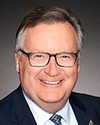I can answer that.
As I mentioned earlier, we have 32 remote communities and 49 altogether. You asked us about what conditions are like. As Mike alluded to earlier when we talked about the social determinants of health, I would say that 90% of those would make up our issues. You're talking about education, infrastructure, and social challenges. All these things combined lead to health issues, whether they're for youth, elders, our people, and so on.
I've always believed that we should be investing in those things, including infrastructure, programming for our youth, recreation, hockey, spending time on the land, and being proud of who they are as first nations people—whatever we have to do to ensure they're healthy and that they're raised right.
People in our 32 remote communities all need to fly out to Sioux Lookout or Timmins. A return flight would cost about $1,000 to $1,500. They have to go through the non-insured....They have to pick up the phone and call non-insured, which has to approve them. Sometimes they say no. Sometimes they say yes.
They come into Thunder Bay and Sioux Lookout and have to spend time there. Some of them can't speak the language. They get lost in the city. They get lost in the town. It's a whole process to be leaving their first nation to go to a town in which they're not comfortable and having to survive just to get health care. That's the reality of seeking health care for our people.
As I said, you raised some very good points about the social determinants of health. If we could address those social determinants, we'd all be better off. When the health care issues arise, you find that the federal government or the provincial government, whoever it may be, is bailing out first nations or assisting the first nations with health. If we just invest in the foundation of a first nation, we can try to prevent those crises we see. That's it in a nutshell.





